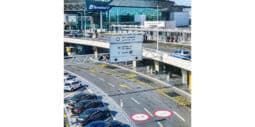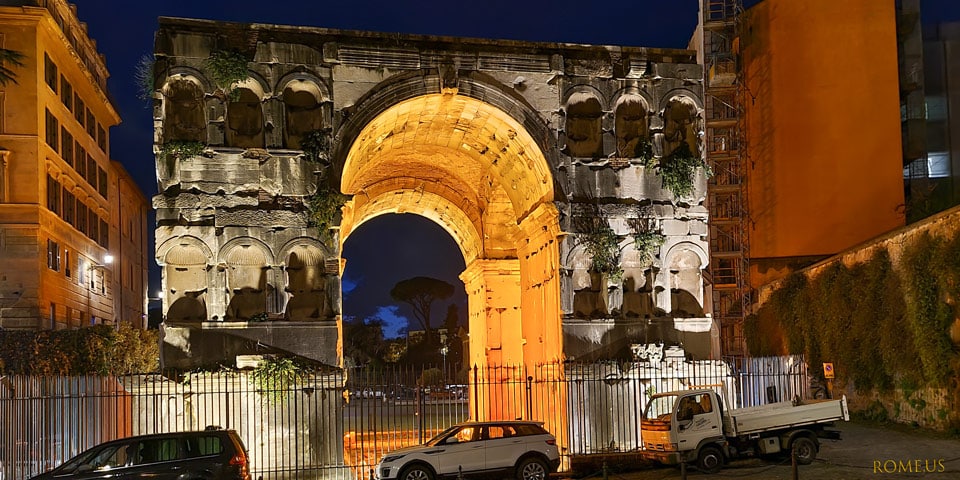

24828 views

| Opening Hours |
Saturday:
-
|
|---|---|
| Closest bus stops |
|
| Closest subway stations |
|
| Address | Via del Velabro, 5, Roma |
Located in the heart of the ancient city of Rome, the Arch of Janus holds a distinctive place in the architectural and historical landscape of the city. As the only surviving quadrifrons or four-faced, triumphal arch in Rome, it carries with it centuries of history and mystery. Thought to have been constructed in the 4th century AD, it represents a significant period in Roman history, even as its true purpose remains a subject of debate among historians.
From its misunderstood dedication to its transformative journey through time, the Arch of Janus offers a captivating glimpse into Rome’s past. Whether you’re a history buff or a curious traveler, exploring this resilient monument promises an enriching experience.
Contents
ToggleHere are five intriguing facts about the Arch of Janus. Keep them in mind to share with friends while exploring the wonders of Rome:
The Arch of Janus, nestled in Rome’s Forum Boarium, stands as an intriguing enigma in architectural history. Its four-sided, quadrifrons design is unique among Rome’s surviving ancient structures, and its origins and original purpose remain shrouded in mystery.
Its construction, estimated to have occurred in the early 4th century AD, incorporated a technique known as ‘spolia’. This practice involved reusing building materials from earlier structures, a common trait in Roman architecture. In the case of the Arch of Janus, the materials include bricks, pottery shards, and white marble slabs, likely sourced from pre-existing buildings, lending the monument a rich tapestry of history.
Despite its name, the monument is not thought to have been a traditional triumphal arch nor dedicated to the two-faced god, Janus. Its purpose has been a subject of debate among scholars. Some suggest it functioned as a boundary marker, while others propose it provided shelter for traders at the bustling Forum Boarium cattle market. There are even suggestions that it might have been dedicated to Constantine I or Constantius II.
19th-century engravings show how the Arch of Janus changed over time. In the Middle Ages, it became the base for a fortified tower. This tower was first recorded in 1145. It belonged to the Frangipane family, a powerful Roman clan. The tower is depicted in historic engravings until the early 1800s.
From 1827 to 1830, the tower and an attic were removed. They were mistakenly thought to be later additions. This change gives the Arch its current appearance. A staircase in the northwest pier suggests the original structure was larger.
The 19th-century changes aimed to make the arch look triumphal. However, this may not reflect its original design. Despite changes and mysteries, the Arch of Janus fascinates scholars and visitors. Its unique form and intriguing history testify to Rome’s layered past.
Read also about the Triumphal Arch of Constantine.
While the Arch of Janus is a fascinating monument, numerous other attractions are nearby that add to the rich historical and cultural experience of Rome. Here are a few key sites that are worth a visit:
On the weekends, the nearby Campagna Amica Farmer Market comes alive with Italian delicacies. It’s a perfect place to pick up a unique and tasty souvenir from Rome.
If you cross the Ponte Fabricio, you’ll find yourself on the charming Tiberina Island. From there, it’s a short stroll to Trastevere, an authentic and picturesque area of Rome, perfect for further exploration.
The Arch of Janus is nestled in the heart of Rome, specifically at Via del Velabro, 5, 00186 Roma. Despite being safeguarded by a protective fence, it’s still a sight to behold for visitors. However, please note that it does not have specific opening or closing hours as an outdoor monument and can be viewed anytime. Be sure to respect the monument and its surroundings during your visit.
Author: Artur Jakucewicz
This website uses cookies. For more info read the cookies policy
Rome.us © 2025. Created with love by Roman experts and guides.